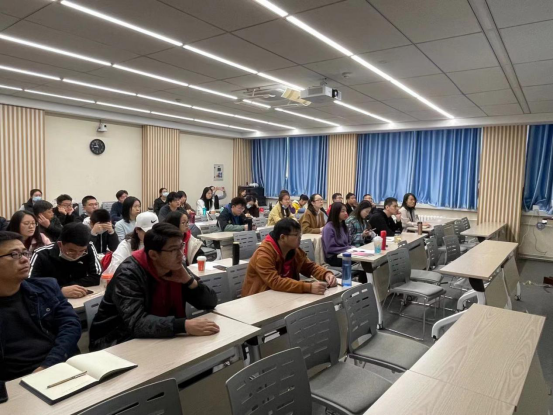Research Fellow Zhai Panmao, Secretary-General of the Chinese Meteorological Society, Chief expert of Meteorological dissemination science of the Chinese Association for Science and Technology, and Co-Chairman of the first Working Group of the IPCC Sixth Assessment Report, lectured on ”Introduction to Climate Change Science” for postgraduate students in Qilian Building classroom 502 at 8:30 am, March 9th.
This course focused on "observed changes in the climate system" and was consisted of six parts: climate observation system, construction of a long-term sequence of climate change, changes in the atmosphere and the land surface, changes in the cryosphere, changes in the oceans, and the earth's energy budget change and its distribution in the climate system. IPCC has made several key conclusions on climate change and process based on observation, which involves the core climate variables of the five major layers of the climate system. Understanding the observation techniques for these variables and the formation of climate change data sets are important for understanding the climate system. Dr. Zhai began the class with the development of the climate observation system, introduced the formation of observation data sets of the atmosphere, hydrosphere (ocean) and land surface (including the biosphere, cryosphere, terrestrial hydrology). He showed the students the remarkable change caused by global warming and the greenhouse effect with the help of the long-term observation results, which proved the authenticity of global warming. In addition, as the Co-Chairman of the first working group of the IPCC Sixth Assessment Report, Dr. Zhai introduced the IPCC to the students and encouraged them to study climate.

At the end of the course, Dr. Zhai introduced some controversial issues concerning the research of climate change. Then he left several questions to encourage students to actively think and grope for science. After class, the students asked Dr. Zhai questions passionately. The atmosphere of the whole class was active and interaction between teachers and students was frequent.